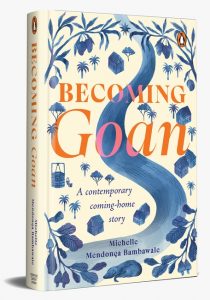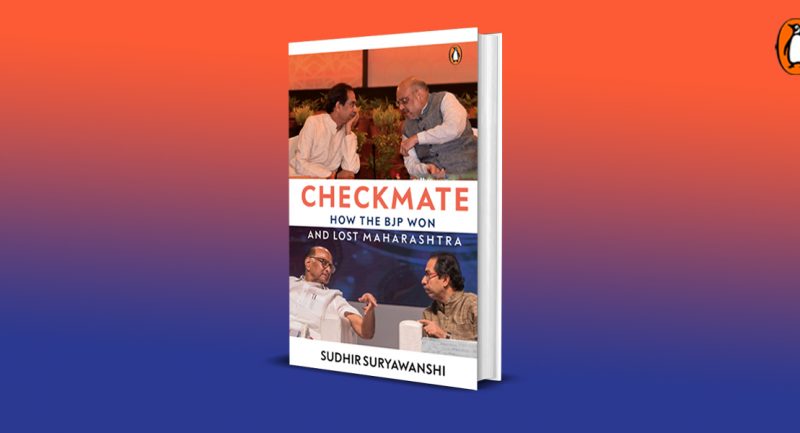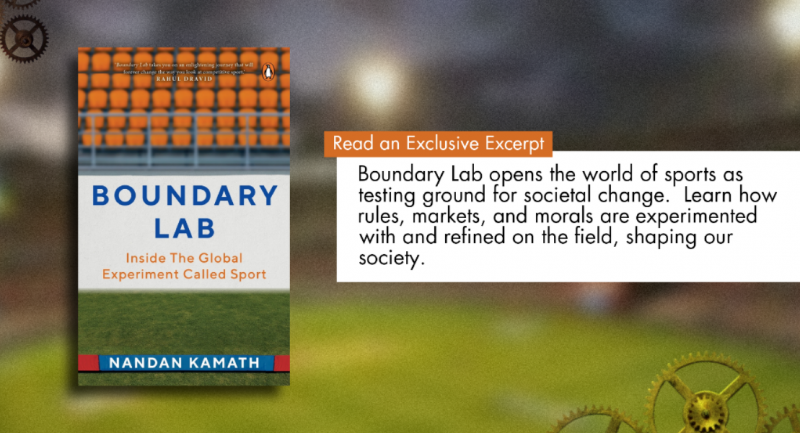
Step into the vibrant world of Becoming Goan by Michelle Mendonça Bambawale, a heartfelt journey through Goa’s beauty and culture. From inheriting a 160-year-old house in Siolim to discovering quirky legends, Michelle’s memoir is a colorful exploration of identity, love for the land, and concerns about its environment.
Read this exclusive excerpt to dive into the simplicity, warmth, and joy of Goa and ultimately Becoming Goan.

‘Nothing is simpler than being a Goa . . . For God in his infinite sagacity has divided the world into two continents, Goa and the rest of the world, and the whole of humanity into two distinct races: Goans and non-Goans,’ 19 concluded poet and writer Manoharrai Sardessai in his Goa Today editorial.
A Goan’s love for the state is our foremost attachment. Its breathtaking beauty has made us fiercely proprietorial. You will hear: ‘Our Goa or our Goan.’ Being Goan comes first, before our Hindu, Muslim, Christian, Sikh, Parsi, Jain, Jewish, Buddhist, atheist, or environmentalist beliefs. We are united by our love of this blessed land, its mangoes and feni. Goan men across religious and other persuasions have gout— the gift of a rich diet.
Goa is some sort of strange east–west hybrid. Estranged from the rest of India because of its longer Portuguese colonization, Goan Catholics were forced to adapt Westernized dress and food habits when they were converted. Over the centuries, there was a synthesis with the Latin culture and Goa got the ‘eat, drink, sing, dance and be merry’ stereotype that we still have today. With its wines, women and songs, Goa is seen as more western from the rest of India and is the exotic east for those from the West. Goans have a unique sense of who we are. We have a strong joie de vivre. To some, it is heritage—the land, tambdi mati, Konkani, mandos and dulpods, kunbi and dekni, house and property, laterite, Xittcodi, feni, football and the monsoons. To others, it is modernity—education and transportation for all, accountable politics, the fight against mining, construction, corruption and casinos. Many are proud: ‘We have one of the highest rates of literacy, voter turnout and GDP in the country.’
The Goa Migration Study 2008 discusses, ‘Though the Portuguese spent 451 years in Goa—making it one of the longest colonial dominations in history—the regime unleashed its proselytizing zeal only on its ‘Old Conquests’ in the talukas of Bardez, Salcete, Tiswadi and Mormugao. The Old Conquests were densely populated, but the Portuguese did little to set up industries or generate employment in these areas. Consequently, nearly one-tenth of the population was forced to migrate.
I suspect there is some unwritten hierarchy involved in where Goans migrated to. The biggest and most influential clusters were economics—the sophisticated Bombay Goans (Bombaikars) with big city conveniences and attitudes, the Karachi Goans, who now have Indian passports, visa-related challenges and complications with their land being confiscated and labelled ‘enemy property’, and the East African Goans (Africanders), who are Westernized in their dress and attitude and prefer to be called either Goans or Portuguese, not Indians or East Africans. Then there were also Goans like my grandparents who moved to Poona, Belgaum, Dharwad, Hubli, Nagpur or Bhusawal for education and employment. Somehow, the poor Goans in Goa don’t rank very high and are left behind. Hence, I am asked, ‘Why would you choose to live in such an old-fashioned place? You have to leave to succeed.’ It is similar to the power and hierarchy of passports, where a Canadian, Portuguese or Australian, is perceived to be more powerful than an Indian, Pakistani or Bangladeshi one.
Academicians and historians have studied and documented the Goan diaspora, including prominent personalities of Goan descent. While there are many that hold public office, including the re-elected Prime Minister of Portugal, Antonio Costa, several others are soldiers, artists, writers, musicians, athletes, doctors, engineers, nuns and priests, who have made the world a better place, saved lives and won hearts and accolades. Uncle Clarie, my godfather, Mummy’s younger brother aka Wing Commander Clarence D’Lima, was an elite and decorated Indian airforce pilot, who laid down his life (at the young age of thirty-none) in the service of this country. In November 1977, he was piloting an aircraft carrying then prime minister Morarji Desai and other VVIPS that crashed close to the storm-soaked Jorhat airfield in Assam, as they attempted to land under extremely adverse and challenging flight conditions. All the passengers survived while all the flight crew perished.
In honour of his heroic service, a road is named after him in Pune (close to where he lived) and in Limavaddo in Socorro, Goa (his ancestral village).
Plenty of the Goan diaspora remain very interested in their ancestry. Committed to the cause, they spend time, effort and money building a family tree that goes back generations and centuries, digging through church, public, family records and photographs and know their Hindu last names before conversion to Catholicism. Nowadays, they even use technology, online family trees and DNA testing to prove how Goan they are. They organize family reunions in Goa, Portugal or both.
***
Get your copy of Becoming Goan by Michelle Mendonça Bambawale wherever books are sold.









